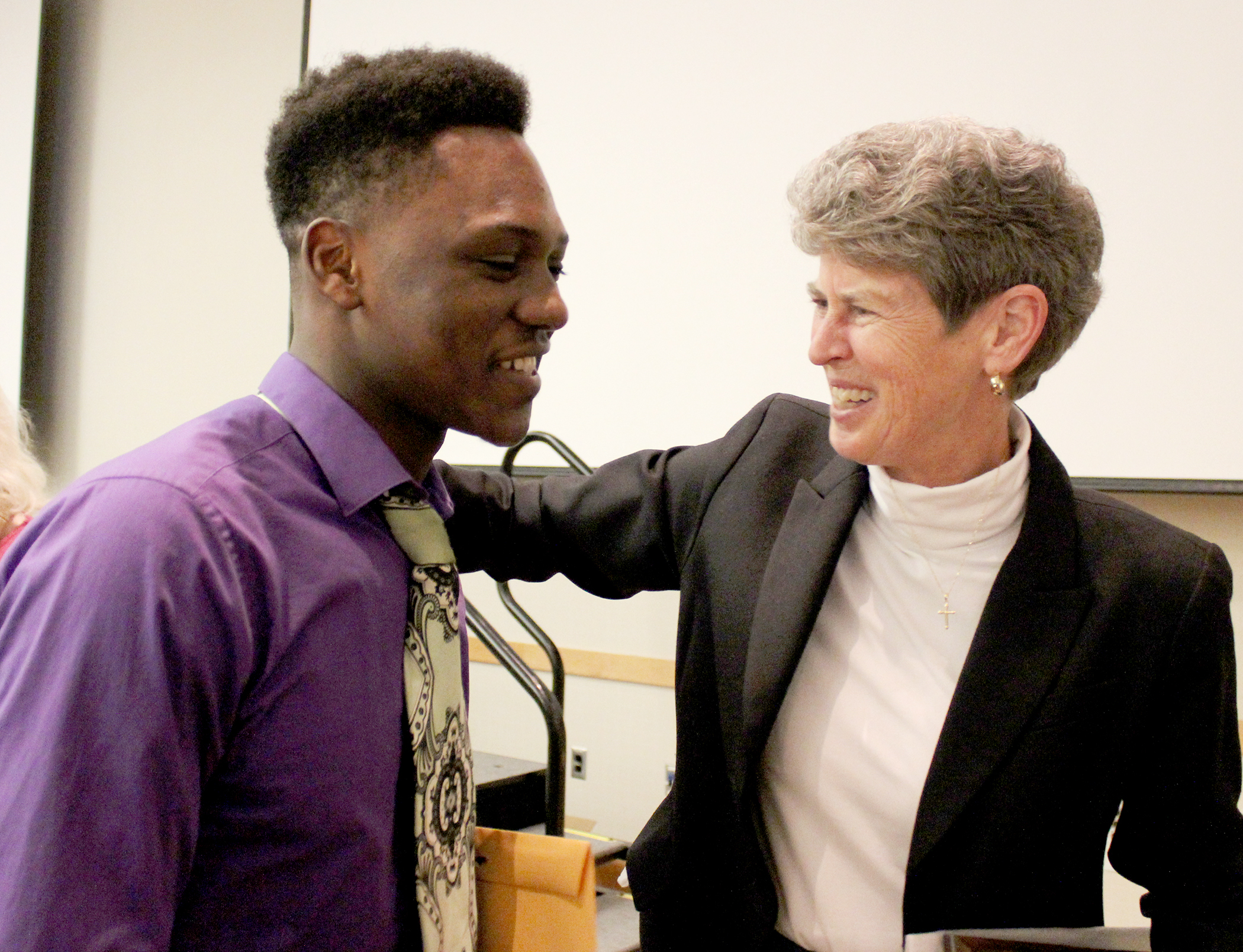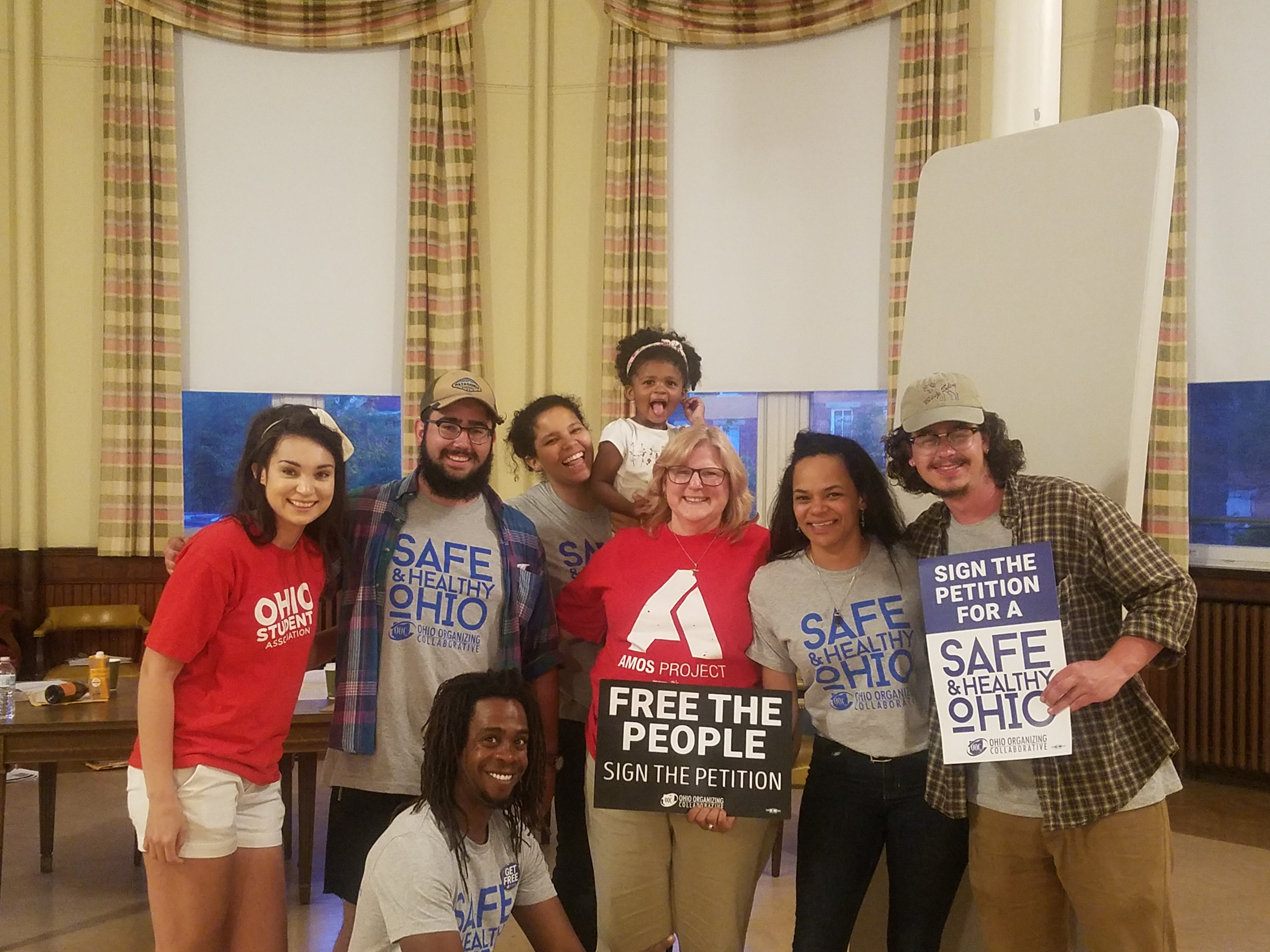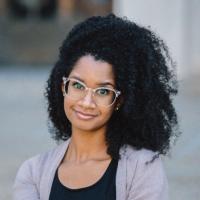
Charity Sr. Sally Duffy congratulates a DePaul Cristo Rey High School student for winning a scholarship in 2016. (Provided photo)
Think about a time you felt that people were discriminating against you. Maybe it was because of your race, or perhaps something simpler such as your age or your height.
- Was the reason people were mistreating you something you could control?
- How did it feel to be on the outside? Was it hurtful or scary?
- What influence does race have on your life?
- How do you feel about racism while reading this article?
- Imagine how a person of a different race might feel about this article.
In Cincinnati, combating daily forms of racism
Editor's note: This is the second in an occasional series examining how sisters and others are working to heal cities divided after incidents of anti-black racism. Read the first story.
In the 15 months since former police officer Ray Tensing went home a free man, things in Cincinnati have pretty much returned to normal. No deluge of mourners and volunteers descended upon the city to fuel a national movement. There has been no centralized, coordinated campaign against police brutality, and, unlike in Ferguson, Missouri, the local archdiocese has not pushed racism to the top of its list of social concerns.
The last public demonstration was in July 2017, when, after two mistrials, prosecutor Joe Deters dropped his murder and voluntary manslaughter case against Tensing. The white University of Cincinnati police officer fatally shot Sam DuBose, an unarmed black man, during a traffic stop near campus in July 2015. Even when the University of Cincinnati announced earlier this year it would award Tensing $344,000 in back pay and legal fees, no one took to the streets.
But it would be a mistake to think the city's activists and organizers have forgotten DuBose, or that they haven't been busy.
The way Nelson Pierce Jr., a community organizer and the senior pastor of Beloved Community Church, sees it, the fact that the situation no longer stirs crowds of protesters was to be expected. The fight for black liberation is constantly evolving, he said, and in Cincinnati, it has evolved beyond Tensing.
"Because, at the end of the day, it wasn't really about Ray Tensing," Pierce said. "It was about protecting black people — particularly black people who are deemed not worthy of protection, whose names aren't famous, whose reputations aren't spotless, who aren't going to be given a plaque or be celebrated in black history for anything except for the fact that they were murdered by a police officer."
Since Tensing's second mistrial, social justice advocates in Cincinnati have shifted their focus back to what Sister of Charity of Cincinnati Sr. Sally Duffy refers to as "the continuum."
Some racism is dramatic and in-your-face, with the nature of DuBose's killing being a prime example, Duffy said. But the continuum — that is, the more ordinary forms of racism like unequal access to health care, education and jobs — includes issues that require constant attention.
And Cincinnati has scores of initiatives tackling those issues.
Duffy, for instance, sits on the boards of the Ohio Justice & Policy Center and the Greater Cincinnati Redevelopment Authority. She is interim chair of Cincinnati's Child Poverty Collaborative and co-chair of Gen-H, a local health collaborative. She was an ambassador for the Hamilton County, Ohio, children’s services levy, which voters approved in late 2018.
In addition to pastoring and organizing, Pierce is a leader of Design Impact, a nonprofit that helps marginalized communities participate in finding solutions to social inequalities.
Since 2016, the Intercommunity Justice and Peace Center, which was founded by five communities of women religious in 1985, has been hosting interracial "Rethinking Racism" workshops around the city. The initial purpose was to get white people to expand their conception of anti-black racism, said Sister of Charity of Cincinnati Sr. Andrea Koverman, the center's peace and nonviolence program manager.
Charity Sr. Andrea Koverman at her desk at the Intercommunity Justice and Peace Center (GSR photo / Dawn Araujo-Hawkins)
"Everybody initially says, 'I'm not a racist,' with no understanding of the institutionalized and systematic practices that we all participate in, whether or not we want to," Koverman said. "So, moving away from white guilt, helping people not be defensive about white privilege and understanding that it's a reality — and that gives us the responsibility [for ending racism]."
About 800 people have attended the center's workshops, many of them consistently. In addition to helping people, black and white, process their feelings about DuBose's death, Koverman said she's also seen people change the way they look at the world.
Currently, the workshops are doing a multi-year exploration of gentrification. Last year's kickoff explored the historical context of the rampant gentrification upending Cincinnati's black neighborhoods. This year, guided by feedback from black participants who said they wanted less talk and more action, the workshops are focused on teaching people how to protect their neighborhoods from developers.
The AMOS Project, a faith-based organizing collaborative, put its weight behind a statewide initiative that would retroactively change nonviolent drug felonies to misdemeanors, an attempt to lessen some of the damage the notorious war on drugs has caused in black communities. Ohio voters rejected the issue during the November 2018 midterm election.
Elizabeth Hopkins, lead organizer at the AMOS Project, imagines DuBose would have benefited from initiatives to decrease the effects of the war on drugs, a war many criminal justice reformers believe has only served to ensure black neighborhoods are overpoliced and to populate prisons with black bodies.
A month after his death, an investigation by the Cincinnati Enquirer found DuBose had been cited or arrested 90 times throughout his life, primarily for traffic violations and nonviolent drug offenses. For some people, Hopkins said, the fact he had once sold marijuana justified his death at the hands of a police officer.
"It was like, 'Well, he had this rap sheet,'" Hopkins said, recalling conversations she had with people in Cincinnati's faith community. "Well, maybe if he wasn't overpoliced, he wouldn't have such a long rap sheet."
Hopkins still reacts physically when she talks about DuBose, grimacing and tensing her shoulders. She was a student at the University of Cincinnati when he was killed, and her current job is the result of her exasperation with the university's initial response to his death. It hosted a series of panel discussions. She was tired of the panels and wanted action.
Hopkins was one of the key organizers of the city's first protests, putting together what she called a "Jericho march." During Tensing's first trial in October 2016, 400 people, including Duffy, Pierce and Koverman, prayed and marched around the courthouse.
But in these quieter days, Hopkins is haunted by a fear that the protests were too peaceful. After all, a man was shot in the head. Perhaps their lack of expressed rage kept their protest from becoming a national movement like Ferguson.
"You would turn on the TV, and all you would see is a bunch of these crazy people of faith marching around the courthouse praying for the families. Plural. Both sides," Hopkins said, pursing her lips.
"We know that riots are the voice of the unheard and the oppressed, and we didn't have riots," she continued. "We didn't even have broken windows. Our march was super freaking peaceful."
Pierce, who spent four months organizing in Ferguson after Michael Brown's death — he said he could still feel the tear gas in his eyes when he heard about DuBose — thinks it's a valid concern. He's convinced that Ferguson became a de facto war zone garnering so much national attention because protesters burned down a QuikTrip gas station.
"If they don't burn down that QuikTrip, none of the rest of it happens," he said. But what would that kind of national coverage have meant in Cincinnati? Would there be a more centralized movement today?
"I don't know what it would have meant," Pierce said before taking a long pause. "I don't know what it's meant in Ferguson. For all of that attention, Darren Wilson is still home and Leslie McSpadden [Brown's mother] still doesn't have Mike."
Pierce said he finds the public discussion around race and police brutality in the United States discouraging. Too often, the end result is that black communities are told to just trust the police to do better. He said he wonders whether that advice is good in an imbalanced situation: The police have all the power and might.
Still, he's hopeful things will get better for black people in the United States. It's a hope he calls annoying and irrational but one that is buoyed by his faith in God and God's miracles.
Hopkins, too, said she thinks the nation is in need of divine intervention. But she believes it's coming.
"It feels like things are shifting right now," she said. "There's something in the atmosphere where, spiritually, something's going on. God's rounding up his kids because something's about to happen, and we need to be ready to usher that new thing in."

Elizabeth Hopkins, second from right, and staff members from the AMOS Project and Ohio Organizing Collaborative after a signature-collection push on primary Election Day, May 8. (Provided photo)
This article looks at different ways to work for change regarding racism.
- Sr. Koverman says that if people understand the unfair practices in our society that hurt people of certain races, they can begin to take responsibility for changing them. What are some racist practices that you've read about in this article or observed personally?
- How are sisters and others in this article working to curb practices such as gentrification and over-policing?
- Do you think organizers in Cincinnati would have been more effective with an angry, less peaceful protest? Why or why not?
- Issues such as health care, education and jobs don't grab media attention like riots do. Why do leaders in Cincinnati take the longer, harder approach to changing society?
An expert on the law once put Jesus on the spot with a question: Which is the greatest commandment? Here's how Jesus responded:
You shall love the Lord, your God, with all your heart, with all your soul, and with all your mind. This is the greatest and the first commandment. The second is like it: You shall love your neighbor as yourself.
Jesus often gives answers that raise more good questions:
- How do you define "neighbor" — someone who lives near you or anyone who lives in the world?
- Can you imagine loving yourself like God loves you? If so, can you imagine loving your neighbor like God loves them?
- What gifts do you need to widen your concept of "neighbor" and to deepen your ability to love?
The bishops of the United States talk about racism — in society, in America and even in the church, in a recent pastoral letter:
The roots of racism have extended deeply into the soil of our society. Racism can only end if we contend with the policies and institutional barriers that perpetuate and preserve the inequality — economic and social — that we still see all around us. With renewed vigor, we call on the members of the Body of Christ to join others in advocating and promoting policies at all levels that will combat racism and its effects in our civic and social institutions.
"Open Wide Our Hearts: The Enduring Call to Love," by the United States Conference of Catholic Bishops, 2018
- Teams, clubs and cliques all have rules — some of them unwritten — that hinder or exclude certain types of people. Think of the groups that you're part of. Do any of them have rules that create unfair barriers?
- Learn more about "Open Wide Our Hearts" in this video, which captures five key points about racial injustice. It was produced by the Catholic Mobilizing Network, which works to end the death penalty and promote restorative justice. Studies show that in the United States, blacks and other minorities are disproportionately sentenced to execution.
Racism is a key concern of the Sisters of Charity of Cincinnati. Their website's page on racism offers ideas for eliminating racism, including "exploring the unfamiliar." That means doing things that put you in a position where you're the minority. For example, Christians might attend religious services at a mosque or a synagogue, or students from an all-white suburban school might visit a multicultural school in a city.
- Think about an experience that would stretch you beyond your comfort zone regarding race. What might that be and how might it shift your perspective on racial issues?
- Work with your parents, friends or leaders of your school or church to make that exploration a reality.
To respond honestly to racism around us, it helps to explore where it might be with in us.
- Think about the most recent time you heard a racist comment or joke. How did you feel? Did you laugh, object or just say nothing? Practice what you might say next time someone makes an inappropriate racial comment to you.
- Examine stereotypes or biases you might have about people of other races. Do you make assumptions about people of other races — things they like or dislike, or things they're good at or struggle with? Explore the truth of your thoughts and how they affect the way you interact with others.
- Learn more about groups in your community working to fight racism and discrimination. Take part in a discussion group or public event. You don't have to say a word or be an expert. Sometimes just showing up in a great way to start.
God, father of all peoples, help us to better love and share our gifts with all of our sisters and brothers.
Give us the wisdom to look beyond colors, borders and other false barriers, and to build bridges to peace and understanding.
Help us to love like you love.
Amen.
Tell us what you think about this resource, or give us ideas for other resources you'd like to see, by contacting us at [email protected]
